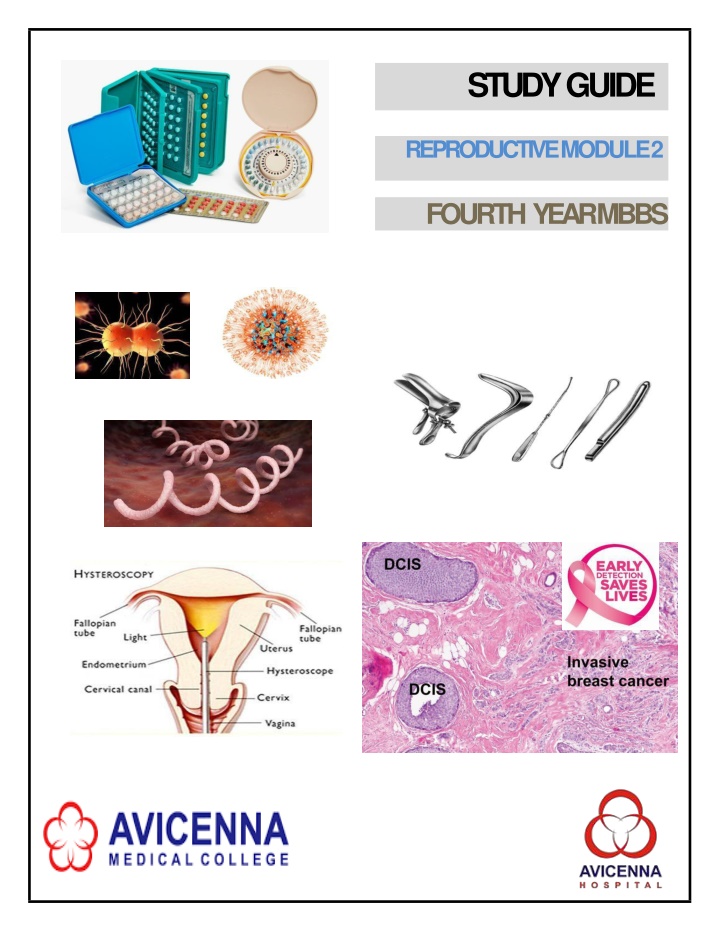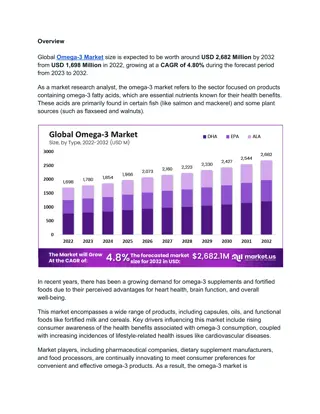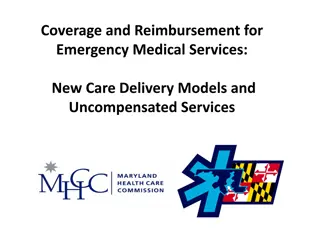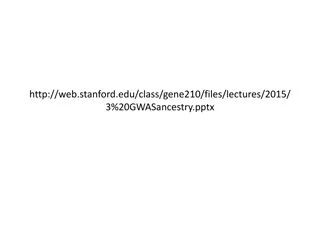
Reproductive Module 2 Study Guide for 4th Year MBBS Students
Explore the comprehensive study guide for the Reproductive Module 2 designed for fourth-year MBBS students at Liaquat National Medical College and Avicenna Medical College. The guide covers objectives, learning methodologies, resources, assessment methods, and curriculum framework to enhance students' understanding and performance in the reproductive system.
Download Presentation

Please find below an Image/Link to download the presentation.
The content on the website is provided AS IS for your information and personal use only. It may not be sold, licensed, or shared on other websites without obtaining consent from the author. If you encounter any issues during the download, it is possible that the publisher has removed the file from their server.
You are allowed to download the files provided on this website for personal or commercial use, subject to the condition that they are used lawfully. All files are the property of their respective owners.
The content on the website is provided AS IS for your information and personal use only. It may not be sold, licensed, or shared on other websites without obtaining consent from the author.
E N D
Presentation Transcript
STUDYGUIDE REPRODUCTIVE MODULE2 FOURTH YEARMBBS
LIAQUAT NATIONAL MEDICAL COLLEGE AVICENNA MEDICAL COLLEGE 4TH YEAR MBBS, REPRODUCTIVE MODULE2 STUDY GUIDE FOR REPRODUCTIVE 2MODULE Page No. 3 4 5 8 8 9 19 20 21 22 23 24 25 CONTENTS S.No Overview Introduction to StudyGuide LearningMethodologies Module: Reproductive2 Introduction Objectives and LearningStrategies LearningResources Additional LearningResources Assessment Methods Modular Examination Rules and Regulations(AVMC) Schedule Appendix:A Appendix:B 1 2 3 4 4.1 4.2 5 5.1 6 7 8 9 10 Page|2
4TH YEAR MBBS, REPRODUCTIVE MODULE 2 AVICENNA MEDICAL COLLEGE Module name: Reproductive System-II Year: Four Timetable hours: Lectures, Case-Based Discussion(CBD),Clinical Rotations, Task Oriented Learning, Task Presentation, Demonstrations, Skills, Self-Study MODULE INTEGRA TED COMMITTEE Duration: 8weeks MODULECOORDINATOR: CO-COORDINATORS: Professor Dr. Zubair Ahmad(Biochemistry) Professor Dr. Rubina Hafeez (Pathology) Professor Dr.Rehana Shahid(Anatomy) DEPARTMENTS & RESOURCE PERSONS FACILITA TINGLEARNING BASIC HEALTHSCIENCES CLINICAL AND ANCILLARYDEPARTMENTS FAMILYMEDICINE Professor Dr. Muhammad Luqman ANATOMY Professor Dr.Rehana Shahid BIOCHEMISTRY Professor Dr. Zubair Ahmad MEDICALEDUCATION Professor Dr. Waheed Ahmad COMMUNITYMEDICINE Professor Dr. Rana Muhammad Akhtar Khan INTERNALMEDICINE Dr. Muhammad Usman Amir PATHOLOGY Endocrinology Prof. Dr. Waheed Ahmed Professor Dr. Rubina Hafeez PHYSIOLOGY Professor Dr. Binyamin Ahmad PHARMACOLOGY Professor Dr. Rana Tariq Mehmood AVMCMANAGEMENT Professor Dr. Gulfreen Waheed, PrincipalAVMC Brig.Dr. Gul e Rana , Director AVMC Dr. Sadia Awan Dr. Muhammad Muzzammil Sadiq Dr. Usama Bin Ishtiaq STUDY GUIDE COMPILEDBY: Department of Health CareEducation Page | 3
AVICENNA MEDICAL COLLEGE LIAQUAT NATIONAL MEDICAL COLLEGE INTRODUCTION 4TH YEAR MBBS,REPRODUCTIVE MODULE2 WHAT ISA STUDYGUIDE? Itis an aid to: Informstudentshowstudentlearning programof thesemester-wisemodulehasbeenorganized Helpstudentsorganizeandmanagetheirstudiesthroughoutthemodule Guide students on assessment methods, rules andregulations THESTUDYGUIDE: Communicates information on organization and management ofthe module. Thiswill helpthestudentto contacttherightpersonin caseof anydifficulty. Definestheobjectiveswhich areexpectedto beachieved attheendof themodule. Identifies the learning strategies such as lectures, small group teachings, clinical skills, demonstration, tutorial and casebased learning that will be implemented to achieve the module objectives. Provides a list of learning resources such as books, computer assisted learning programs, web- links,journals,forstudents to consultin orderto maximizetheir learning. Highlightsinformationonthe contributionofcontinuousandsemesterexaminations onthe student s overall performance. Includesinformation onthe assessmentmethodsthat will beheld to determineeverystudent s achievement ofobjectives. Focusesoninformationpertainingtoexaminationpolicy,rulesandregulations. CURRICULUMFRAMEWORK Studentswill experienceintegratedcurriculumsimilar to previousmodulesof all 6semesters.In7th semester 49 students of group A and B will experience ENT and 48 of Group C and D will experience Eye. Similarly in 8th Semester the groups will reciprocate i.e the later 48 students will experience ENT and 49 will experienceEye. INTEGRATED CURRICULUM comprises system-based modules such as Eye/ENT, Orthopedics and Reproductive System-II which links basic science knowledge to clinical problems. Integrated teaching means that subjects are presented as a meaningful whole. Students will be able to have better understandingof basicscienceswhentheyrepeatedlylearn in relation toclinical examples. LEARNING EXPERIENCES: Case based integrated discussions, Task oriented learning followed by task presentation, skills acquisitionin skillslab,computer-basedassignments,learning experiences in clinics, wards. Page|4
LIAQUAT NATIONAL MEDICAL COLLEGE AVICENNA MEDICAL COLLEGE 4TH YEAR MBBS, REPRODUCTIVE MODULE2 *Note:Community medicine will run parallel in 7 and 8 semesters LEARNINGMETHODOLOGIES Thefollowing teaching/learningmethodsareusedto promotebetterunderstanding: InteractiveLectures Small GroupDiscussion Case-Based Discussion (CBD) Clinical Experiences o ClinicalRotations Skillssession Task-OrientedLearning o TaskPresentation INTERACTIVE LECTURES:In large group, the lecturer introduces a topic or common clinical conditions and explains the underlying phenomena through questions, pictures, videos of patients interviews, exercises,etc.Studentsareactively involved in thelearningprocess. SMALL GROUP SESSION: This format helps students to clarify concepts, acquire skills or desired attitudes. Sessions are structured with the help of specific exercises such as patient case, interviews or discussion topics. Students exchange opinions and apply knowledge gained from lectures, tutorials and self study. The facilitator role is to ask probing questions, summarize, or rephrase to help clarify concepts. Page|5
LIAQUAT NATIONAL MEDICAL COLLEGE AVICENNA MEDICAL COLLEGE 4TH YEAR MBBS, REPRODUCTIVE MODULE2 CASE-BASED DISCUSSION (CBD):A small group discussion format where learning is focused around a series of questions based on a clinical scenario. Students discuss and answer the questions applying relevant knowledge gained previously in clinical and basic health sciences during the module and constructnew knowledge.TheCBDwill beprovided bythe concerneddepartment. CLINICALLEARNING EXPERIENCES:In small groups, students observe patients with signs and symptoms in hospital wards, clinics and outreach centers. This helps students to relate knowledge of basic and clinical sciencesofthemoduleandprepareforfuturepractice. o CLINICAL ROTATIONS: In small groups, students rotate in different wards like Medicine, Pediatrics, Surgery, Obs & Gyne, ENT, Eye, Family Medicine clinics, outreach centers & Community Medicine experiences. Here students observe patients, take histories and perform supervised clinical examinations in outpatient and inpatient settings. They also get an opportunity to observe medical personnel working as a team. These rotations help students relate basicmedical andclinical knowledge in diverse clinicalareas. SKILLSSESSION: Skills relevant to respective module are observed and practiced where applicable in simulated-learningenvironment suchasskillslaboratory. SELF-DIRECTEDSTUDY:Students assume responsibilities of their own learning through individual study, sharing and discussing with peers, seeking information from Learning Resource Center, teachers and resource persons within and outside the college. Students can utilize the time within the college scheduled hoursofself-study. TASKORIENTEDLEARNING: WhatisTaskOrientedLearning(TOL)? In this module, objectives will be achieved by using multiple instructional strategies other than lectures only. Task oriented learning is being introduced to enhance students learning and to get insight of the content necessary to move forward in to practical application of course materials. Students will be engagedin selfdirectedlearning aswell aspeers collaboration andfacultyled instructions Page|6
LIAQUAT NATIONAL MEDICAL COLLEGE AVICENNA MEDICAL COLLEGE 4TH YEAR MBBS, REPRODUCTIVE MODULE2 Process of TOL Learning in thisstrategywill comprisesoftwo stages Stage 1: Pre-class learning ingroups Stage 2: In-class group focused activelearning Stage 1 (Pre- Class) Stage 2 (In- Class) Group presentation and assessment byfacilitator followed by Q/Asession Individual/group study and Grouppresentation preparation TOL processstage1: Students will be divided in 6 sub groups (8-9 members in each sub group). Students group will be given task based on few objectives. These objectives will be emailed (For groupings see AppendixB). Students will have defined time slots for achieving the objectives. They will be required to study the authenticwebsites andwork in groupsto developpresentationsduring allottedstudyhours. TOL processstage2: The groups will then be required to present their PPT/Prezi in class to show their understanding of subjectmatter. Time for group presentation: Each presentation should not exceed 10 minutes followed by five minutesdiscussion Assessment The group presentations and collaborative work will be graded on defined criteria (See Appendix A). Each student is to demonstrate active participation and effective contribution during the group activities. It is mandatory for the students to participate in this activity as their scores will contribute to internal evaluation. Page|7
LIAQUAT NATIONAL MEDICAL COLLEGE AVICENNA MEDICAL COLLEGE 4TH YEAR MBBS, REPRODUCTIVE MODULE2 SEMESTER 7 MODULE:REPRODUCTIVE2 INTRODUCTION Reproductive health (RH) is a state of complete physical, mental and social well-being in all matters relating to the reproductive system. Reproductive Health is essential for peoples overall well-being. Hence Reproductive health and specifically women s reproductive health is given prime importanceat agloballevel. Despite improvement in the reproductive health status of population in Pakistan, it is much below the desired Sustainable Development Goal target level. The maternal mortality ratio (MMR) for Pakistan is 178 per 100,000 Iive births majority resulting from preventable causes related to pregnancy and childbirth. Maternal health and newborn health are closely linked. The reported perinatal mortality rate ofPakistanis64per 1,000births. This module will address common Maternal and child health issues including safe motherhood, contraception, abortion, Infant health care,SexuallyTransmitted DiseasesandHIV/AIDS, infertility. It will alsoaddressthe RHrelated issuesofmen. 1. Bhutta ZA, Hafeez A, Rizvi A, Ali N, Khan A, Ahmad F, Bhutta S, Hazir T, Zaidi A, Jafarey SN. Reproductive, maternal, newborn, and child health in Pakistan: challenges and opportunities. The Lancet. 2013 Jun 28;381(9884):2207-18. WHO, UNICEF, UNFPA, World Bank Group, and the United Nations Population Division. Trends in Maternal Mortality: 1990 to 2015. Geneva, World Health Organization, 2015 United Nations Population Division's World Population Prospects, 2016. Available from: https://data.worldbank.org/indicator/SP.DYN.IMRT.IN Sheet WF. Maternal Mortality. World Health Organization webpage, World Health Organization. 2013;1. 2. 3. 4. Page|8
AVICENNA MEDICAL COLLEGE LIAQUAT NATIONAL MEDICAL COLLEGE MODULE OBJECTIVES ANDSTRA TEGIES 4TH YEAR MBBS, REPRODUCTIVE MODULE2 By the end ofReproductive 2 module students should be able to: Introduction/Review Objectives Department Teaching Strategy Describe the structure of male and femalegenital tract Identify the gross anatomical features offemale externalgenitalia Describe the gross anatomy of the female pelvic organs i-e ovaries, uterine tubes, the uterus with its supporting ligaments and thevagina Interactive Lecture Anatomy SmallGroup Session Explain the role of clinicalpelvimetry Describe the function ofmale reproductive structures, hormones and theirregulation Discuss androgens in detail Classify antiandrogens. Discuss their clinical uses / effects and adverseeffects Classify and discuss pharmacological properties of estrogens Discuss antiestrogens in details along with pharmacologicalprofile Interactive Lecture Physiology SmallGroup Session Pharmacology GYNECOLOGY Developmental disorders of Male and Female genitaltract Discuss pathogenesis, morphology and clinical features of Hypospadias, Epispadias, Phimosis, Cryptorchidism, Septate or double vagina and Gartner ductcysts Sexually Transmitted Infections (STIs) Pathology Interactive Lecture Describe the etiology and pathophysiologyof Sexually Transmitted Infections(STIs) Identify, under microscope, the organisms involved in Sexually TransmittedInfections Classify infections of the lower and uppergenital tract in relation to their morphology & clinical effects Describe etiology, pathophysiology,symptoms, Interactive Lecture Microbiology Practical Pathology Practical Interactive Lecture Urology Page|9
LIAQUAT NATIONAL MEDICAL COLLEGE AVICENNA MEDICAL COLLEGE 4TH YEAR MBBS, REPRODUCTIVE MODULE2 signs, investigations and treatment plan for STIs in males (Epididymitis ,orchitis, prostatitis (chlamydia, gonorrhoea, non-specific urethritis, genital herpes, genital warts, syphilis andHIV) List the causes of vaginaldischarge Differentiate between a normal vaginal discharge (Leucorrhea) and pathological vaginal discharge on the basis of clinicalhistory Describe symptoms, signs, investigations and treatment options for vaginal discharge due to Candidiasis, Bacterial vaginosis, Trichomoniasis, Gonorrhea and Chlamydia trachomatisinfection. Discuss steps for prevention and recurrence of vaginaldischarge Explain the importance of pre and post HIVtest Counseling Identifyissuesof confidentialityin dealingwith a patient withSTI Task Oriented Learningfollowed by task Presentation ObGyn Small groupsession Familymedicine Pelvic InflammatoryDisease Define Pelvic Inflammatory disease(PID) Explain the etiology of PID i.e. Sexually Transmitted Infections (STIs), Post deliveryPID, Post abortion PID and Post surgicalPID Diagnose PID based on symptoms, signs and investigationfindings Discuss the differential diagnosis of PID and its possiblecomplications Discuss the management options for acuteand chronicPID Interactive Lecture ObGyn Amenorrhea/Dysmenorrhae Define primary & secondary amenorrheaand oligomenorrhea Explain the etiology, symptoms and signs, investigations and treatment options forprimary, secondary amenorrhea andoligomenorrhea Based on data provided, differentiate amongthe three types ofamenorrhea Interpret the hormone profile report forPCOS Interactive Lecture ObGyn Page|10
LIAQUAT NATIONAL MEDICAL COLLEGE AVICENNA MEDICAL COLLEGE 4TH YEAR MBBS, REPRODUCTIVE MODULE2 Discuss etiology, pathophysiology, diagnosis,and management options forPCOS Define Primary & Secondarydysmenorrhea Describe etiology, pathophysiology, symptoms, signs for primary & secondarydysmenorrhea Interactive Lecture Fibroids Differentiate among the various types offibroids based on their etiology, symptoms, signsand pathophysiology Justify selection of investigations for fibroiduterus Justify management plans forFibroids Task Oriented Learningfollowed by task Presentation ObGyn Benign tumors of genital tract Differentiate among the various types of ovarian cysts and polyps based on pathophysiology, symptoms,signs Justify selection of investigations for ovarian cysts, polyps Justify management plans for ovariancysts, polyps On the basis ofgiven data Identify the clinical features, risk factors of variousvulvovaginal conditions Justify selection of investigations forvarious vulvovaginalconditions their etiology, Interactive Lecture ObGyn EctopicPregnancy Define ectopicpregnancy Discuss differential diagnosis of acute abdomenin women Based on data provided (history, examination findings, investigation reports) diagnose ectopic pregnancy Discuss the treatment options for ectopic pregnancy including the criteria formedical treatment Interactive Lecture ObGyn Abortion Define abortion according to WHOcriteria Differentiate among the various typesof TaskOriented Learningfollowed ObGyn Page|11
LIAQUAT NATIONAL MEDICAL COLLEGE AVICENNA MEDICAL COLLEGE 4TH YEAR MBBS, REPRODUCTIVE MODULE2 abortions based on dataprovided(history, examination findings, investigationreports) Describe the treatment options foreach type of abortion bytask Presentation Infertility DefineSub-fertility Based on data provided (history,examination findings, investigation reports) diagnose sub fertility in a male andfemale Discuss the causes of anovulation inwomen Interpret the reports of Semen analysis inmale and hormone profile infemale Interactive Lecture ObGyn Describe the psychosocial issues associated with infertility Describe ethical issues confronted bypatients with infertility Tumors Of Lower Female Genital Tract Interactive Lecture Psychiatry Describe benign and malignant lesions of vulva andvagina List the risk factors, pathogenesis and morphological types of cervicalcarcinoma Tumors Of Upper Female Genital Tract Interactive Lecture Pathology Interactive Lecture Discuss premalignant Uterine lesions Discuss pathogenesis, molecular markers and morphological subtypes of Endometrialcarcinoma Discuss the uterine stromal and myometrial tumors Classify Ovariantumors List Subtypes of surface epithelial tumorsand describe theirpathogenesis ListGerm celltumors of ovarywith theirtumor makers Identify gross pathology and microscopic slides of malignant tumors of female genitaltract Interactive Lecture SmallGroup Discussion Pathology Interactive Lecture Interactive Lecture Practical Instruments inGynecology Identify and discuss usesof: Ciscospeculum Sims Obgyn Small groupsession Page|12
LIAQUAT NATIONAL MEDICAL COLLEGE AVICENNA MEDICAL COLLEGE 4TH YEAR MBBS, REPRODUCTIVE MODULE2 Ayersspatula Instruments of DNC & MVA OBSTETRICS NormalPregnancy Based on data provided, diagnose a caseof pregnancy Discuss the physiological changes during pregnancy in the pregnantwoman ObGyn Interactive Lecture Discuss the incidence, types and causesof multiplepregnancy Describe the signs and symptoms, diagnosis, investigations and management of multiple pregnancy Discuss the difference between monochorionic and dichorionicpregnancies Take a detailed history from an Obstetricand Gynecologic real or simulatedpatient Task Oriented Learningfollowed by task Presentation ObGyn Skills Interactive Lecture Psychiatry Explain contraindicated and safe drugs in pregnancy Discuss psychopharmacology duringpregnancy Interactive Lecture Pharmacology AntenatalCare Describe the importance and process ofantenatal care Interactive Lecture ObGyn Differentiate between the terms screeningand diagnosis and between screening and diagnostic tests Discuss the purpose and advantages ofprenatal diagnosis and explain the differences List indications for prenatal screening and diagnosis especially for Down s syndromeand neural tubedefects Explain the basic procedures, advantages and disadvantages of diagnostic proceduresincluding chorionic villous sampling, amniocentesis and chordocentesis Interactive Lecture ObGyn Page|13
LIAQUAT NATIONAL MEDICAL COLLEGE AVICENNA MEDICAL COLLEGE 4TH YEAR MBBS, REPRODUCTIVE MODULE2 Reproductive healthissues Discuss the maternal health situation inPakistan Discuss the important causes of maternal mortality andmorbidity Describe maternal healthservices Describe the levels of obstetric care including obstetric first aid, basic EmNOC, comprehensive EmNOC. Discuss methods for improving maternaland perinatal mortality andmorbidity Interactive Lecture ObGyn List early and late complications ofPregnancy Describe the pathogenesis ofEclampsia Interactive Lecture Pathology Early complications in pregnancy List the most common pregnancycomplications. Describe the incidence and risk factors for the mostprevalent pregnancycomplications. Based on data provided (history, examination findings, investigation reports) identify signs and symptoms in women affected by pregnancy complications. Discuss the medical management provided in responseto pregnancycomplications. Describe maternal and fetal implications arising from the most complications Interactive Lecture ObGyn prevalent pregnancy NormalLabor Definelabor Explain the stages of normallabor. Describe the basic mechanisms oflabor evaluation Describe the 7 cardinal movements oflabor Explain the technique of proper delivery, traction, and handling of infant afterdelivery ObGyn SmallGroup Discussion Perform per-abdominal examination ofa pregnant female / mannequin according to prescribedsteps Skills RSDC Page|14
LIAQUAT NATIONAL MEDICAL COLLEGE AVICENNA MEDICAL COLLEGE 4TH YEAR MBBS, REPRODUCTIVE MODULE2 Define Induction and Augmentation oflabor Explain indications, contraindication, advantages, disadvantages of Induction and Augmentationof labor Discuss the monitoring and managementof induced and augmentedlabor ObGyn Interactive lecture UTI inpregnancy Based on data provided, diagnoseUTI pregnantwomen Discuss the principles investigation andtreatment. ObGyn Small groupsession for effective Infections inpregnancy TaskOriented Learningfollowed bytask Presentation Discuss diagnosis, prognosis and managementof Infections inpregnancy the prevention, investigation, ObGyn Abnormal Labour Define malpresentations and Malpositions and list the different types foreach Describe causes of Breech, Transverse lie and other malpresentations and malpositions Describe the management options foreach malpresentation andmalposition SmallGroup Discussion ObGyn Define obstructedlabor List the main causes of obstructedlabour Describe how each factor contributes tothe development of thiscomplication Describe the clinical signs of obstructedlabour List the common maternal and fetal complications that result from uterineobstruction Describe the management of obstructedlabour IUGR And Small For Gestational Age (SGA) Interactive Lecture ObGyn Define the terms IUGR, SGA, Low birth weight and very low birth weightinfant Describe the evaluation, investigationand management of a fetus withIUGR Interactive Lecture Obgyn Page|15
LIAQUAT NATIONAL MEDICAL COLLEGE AVICENNA MEDICAL COLLEGE 4TH YEAR MBBS, REPRODUCTIVE MODULE2 Analgesia & anesthesia inobstetrics Describe analgesic techniques in labor and cesareandelivery Describe different anesthetic options used in labor and cesarean delivery including the risks and benefits of general anesthesia, spinal anesthesia, epidural anesthesia, pudendal nerve block, and narcotics inobstetrics Interactive Lecture Obgyn Care of Newborn Discuss the advantages of breastfeeding forthe baby, mother, family, andcountry Counsel the mother about advantages ofbreast feeding Explain the significance of self-breast examination and clinicalexamination Task Oriented Learningfollowed by task Presentation ObGyn Puerperium Definepuerperium Describe signs and symptoms of normal and abnormal puerperium and itsmanagement (including for puerperal pyrexia andpuerperal sepsis) Discuss the clinical presentation ofpost-partum depression ObGyn Interactive Lecture Interactive Lecture Psychiatry Gestational TrophoblasticDisease List gestational trophoblasticdiseases Differentiate between Partial andComplete hydatidiformmole Describe the principles of management ofboth benign and malignantvarieties SmallGroup Discussion Pathology Interactive Lecture Obgyn BreastCancer Discuss the and morphology of benign breastdiseases. Recognize the various risk factors in development of breastcancer Differentiate between Hereditary and Sporadic breast cancer in terms ofpathogenesis etiology, pathogenesis Interactive Lecture Pathology Interactive Lecture/practic al Pathology Page|16
AVICENNA MEDICAL COLLEGE LIAQUAT NATIONAL MEDICAL COLLEGE Classify various morphological types of DCISand Invasive carcinoma in terms of morphology and prognosis Identify prognostic &predictive factors in breast cancer and their importance inbreast cancer management Recognize the stages of breastcancer 4TH YEAR MBBS, REPRODUCTIVE MODULE2 Interactive Lecture Pathology SmallGroup Discussion Interactive Lecture List molecular subtypes of breastcancer discuss the clinical presentation ofbenign and malignant breast tumors Surgery Male GenitalSystem Classify Testiculartumors Disucuss the pathogenesis and risk factorsof Germ celltumors Identify gross pathology & microscopic slides of benign lesions & tumors ofMGT Discuss the clinical presentation of differenttypes of testiculartumors Interactive Lecture Pathology Practical Interactive Lectures Urology Contraception Discuss in detail mechanism ofaction, effects clinical uses and toxicity ofprogestins Explain antiprogestins in detail Discuss clinical uses and adverse effects of antiprogestins Enlist different combinations ofhormonal contraceptives Explaintheirmechanismof action, clinicaluses and potentialtoxicities Discuss the use of various contraceptivemethods with thepatient Interactive Lecture Pharmacology Family medicine SmallGroup Discussion Imaging Modalities inObGyn Describe the use of ultrasound forthe evaluation and diagnosis of different Gynaecological disorders Identify Different hard and soft copy views of x rays , contrast x-rays , laparoscopic views(adnexal mass, ruptured and unrupturedectopic pregnancy, PID and TO mass, endometriosis, pelvic adhesions) and hysteroscopic views (endometrial polyp, normal uterinecavity, Interactive Lecture Radiology Interactive Lecture Obgyn Page|17
AVICENNA MEDICAL COLLEGE LIAQUAT NATIONAL MEDICAL COLLEGE submucus fibroid, septate uterus)including Colposcopic views of cervix. 4TH YEAR MBBS, REPRODUCTIVE MODULE2 Domestic and SexualViolence Identify patients at increased risk fordomestic and sexualviolence. Describe the medical and psychosocial management of a victim of sexualassault Interactive Lectures Psychiatry CommunityMedicine Define research and itscomponents List misconceptions aboutResearch Discuss the purpose and advantages ofresearch, and literaturereview ExplainPlagiarism Classify studydesigns Define each type of studydesign Discuss the importance of study designsin research Describe the types of descriptive studydesigns along with advantages anddisadvantages Describe the types of analytical study design and explain the case-control study design along with its advantages and disadvantages and measure of association Define Analytical StudyDesigns Describe types of Analytical StudyDesigns List advantages and disadvantages ofAnalytical Study Designs Differentiate between Vancouver and Harvard styleof referencewriting andnamethetools for referencewriting Discuss importance and outline of Introduction Writing List steps of IntroductionWriting Interactive Lectures / Small Group Discussions Apart from attending daily scheduled sessions, students too should engage in self-study to ensure that all theobjectives arecovered Page|18
LIAQUAT NATIONAL MEDICAL COLLEGE AVICENNA MEDICAL COLLEGE 4TH YEAR MBBS, REPRODUCTIVE MODULE2 LEARNINGRESOURCES SUBJECT RESOURCES A. GROSSANATOMY 1. K.L. Moore, Clinically OrientedAnatomy B. EMBRYOLOGY 1. KeithL. Moore. The DevelopingHuman 2. Langman s MedicalEmbryology TEXTBOOKS 1. Community Medicine byParikh 2. Community Medicine by MIlyas 3. Basic Statistics for the Health Sciences by Jan WKuzma ANATOMY COMMUNITYMEDICINE TEXTBOOK 1. Obstetrics by Ten Teachers, Louise C. Kenny, Jenny E.Myers 2. Gynaecology by Ten Teachers, Louise Kenny, HelenBickerstaff 3. Hacker & Moore's Essentials ofObstetrics and Gynecology 4. Textbook of Gynecology, Rashid LatifKhan 5. Fundamentals of Gynaecology, Dr ArshadChohan OBGYN TEXTBOOKS 1. Robbins & Cotran, Pathologic Basis of Disease,9thedition. 2. RapidReviewPathology,4th edition by Edward F. GoljanMD PATHOLOGY/MICROBIOLOGY WEBSITES: 1. http://library.med.utah.edu/WebPath/webpath.html 2. http://www.pathologyatlas.ro/ A. TEXTBOOKS 1. Textbook Of Medical Physiology by Guyton AndHall 2. Ganong s Review of MedicalPhysiology 3. Human Physiology by LauraleeSherwood 4. Berne & LevyPhysiology 5. Best & Taylor Physiological Basis of MedicalPractice PHYSIOLOGY TEXTBOOK: Basis of Pediatrics (8th Edition PervezAkbar) PEDIATRICS Page|19
LIAQUAT NATIONAL MEDICAL COLLEGE AVICENNA MEDICAL COLLEGE 4TH YEAR MBBS, REPRODUCTIVE MODULE2 ADDITIONAL LEARNINGRESOURCES Students will be involved in Practical sessions and hands-on activitiesthat Hands-on Activities/Practical link with theReproductive Module toenhancelearning. Modelsavailable in themuseumarearichlearning resourceforquick Museum review of anatomy and relatededucational activities Skillsacquisitionin asimulatedenvironmentin theskillslabinvolving experiential learningwill ensurepatientsafetyandwill alsohelp to build SkillsLab confidence in approaching thepatients Students will use easily accessible internet resources with added time InternetResources flexibilityto enrichandupdatetheirknowledgeanditsapplication Page|20
LIAQUAT NATIONAL MEDICAL COLLEGE AVICENNA MEDICAL COLLEGE 4TH YEAR MBBS, REPRODUCTIVE MODULE2 ASSESSMENTMETHODS: Best Choice Questions (BCQs) also known as MCQs (Multiple ChoiceQuestions) Objective Structured Practical/Clinical Examination OSPE orOSCE BCQs: A BCQ has a statement or clinical scenario of fouroptions (likely answers). Correct answer carries one mark, and incorrect zero mark . There is NO negativemarking. Studentsmarktheirresponsesonspecifiedcomputer-basedsheetdesignedforAVMC OSCE: All studentsrotatethroughthesameseries of stationsin thesameallocatedtime. At each station, a brief written statement includes the task. Student completes the given taskatonegivenstationin aspecifiedtime. Stationsareobserved,unobserved,interactiveorreststations. In unobserved stations, flowcharts, models, slide identification, lab reports, case scenariosmaybeusedtocoverknowledgecomponentof the content. Observed station: Performance of skills /procedures is observed byassessor Interactive: Examiner/s ask questions related to the task within the timeallocated. InReststation,studentsin thegiventimenotgivenany specifictaskbutwait tomove to the followingstation. InternalEvaluation Students will be assessed comprehensively through multiplemethods. 20%marks of internal evaluation will be added in theory of semester exam. That 20% may include class tests, assignment, journals, and the modular exam which will all havespecificmarksallocation. Example: Number of Marks allocated for Semester Theory and InternalEvaluation InternalEvaluation (Class tests +Journals + Assignments + ModularExam) Theor y Marks UHS Total(Theory) Examination 80% 20% 100% FormativeAssessment Individual department may hold quiz or short answer questions to help students assess their own learning.Themarksobtained arenotincluded in theinternal evaluation. Page|21
LIAQUAT NATIONAL MEDICAL COLLEGE AVICENNA MEDICAL COLLEGE 4TH YEAR MBBS, REPRODUCTIVE MODULE2 For A VMC Examination Policy, please consult JSMUwebsite! More than75% attendance is needed to sit for themodular, And UHS examinations MODULAR EXAMINATION RULES & REGULATIONS(AVMC Studentmustreportto examination hall/venue,30minutesbeforetheexam. Exam will begin sharp at the giventime. Nostudent will beallowed to enter theexaminationhall after15minutesof scheduled examinationtime. Studentsmustsitaccordingto theirroll numbersmentioned ontheseats. Cell phones are strictly not allowed in examinationhall. Ifany studentisfoundwith cell phonein anymode(silent, switchedoff or on)he/shewill notbe allowed to continue theirexam. Nostudentswill beallowed to sitin examwithout University Admit Card, AVMC CollegeID Card and Lab Coat. Studentmustbring thefollowing stationary itemsfortheexam:Pen,Pencil,Eraser,and Sharpener. Indisciplinein theexamhall/venueisnotacceptable.Studentsmustnotpossessanywritten materialorcommunicatewith theirfellowstudents. Page|22





